Inland Sea Oats, commonly known as Indian Wood Oats, River Oats, or Wild Oats, is a versatile and ornamental perennial Texas native grass.
Native to Central Texas and found eastward to the Atlantic coast, this plant thrives in shaded slopes and along stream banks. With striking seedheads that turn warm ivory in the fall, it’s become a popular choice in San Antonio landscapes.
In my own San Antonio, Texas landscape, Inland Sea Oats have thrived, growing vigorously near an AC condensation line or at the base of a rainwater harvesting berm. Its adaptability makes it perfect for erosion control along streams, slopes, and shaded areas.
Quick Facts
- Common Names: Inland Sea Oats, Indian Wood Oats, River Oats
- Latin Name: Chasmanthium latifolium
- Family: Poaceae (Grass Family)
- Height: 2 to 4 feet
- Bloom Time: Summer to Fall
- Light Requirements: Shade to partial sun
- Soil Type: Moist sands, loams, clays; tolerates and in fact, prefers, poorly drained soils
- Water Needs: Medium; tolerates more sun with more water
Distribution – Where are Inland Sea Oats Native?
Inland Sea Oats are native to Central Texas, stretching eastward all the way to the Atlantic coast and north into New England and parts of the Midwest. They are incredibly adaptable and have become a staple in urban and suburban landscapes (at least here in San Antonio) due to their resilience and decorative appeal.
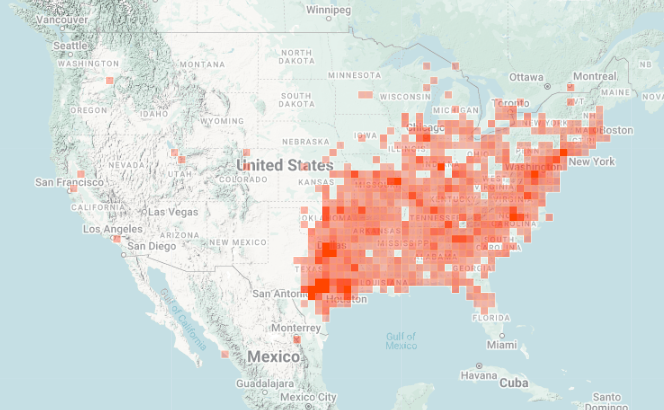
In Texas, Inland Sea Oats are abundant, but not too far west than San Antonio, and only as far south as Corpus Christi.
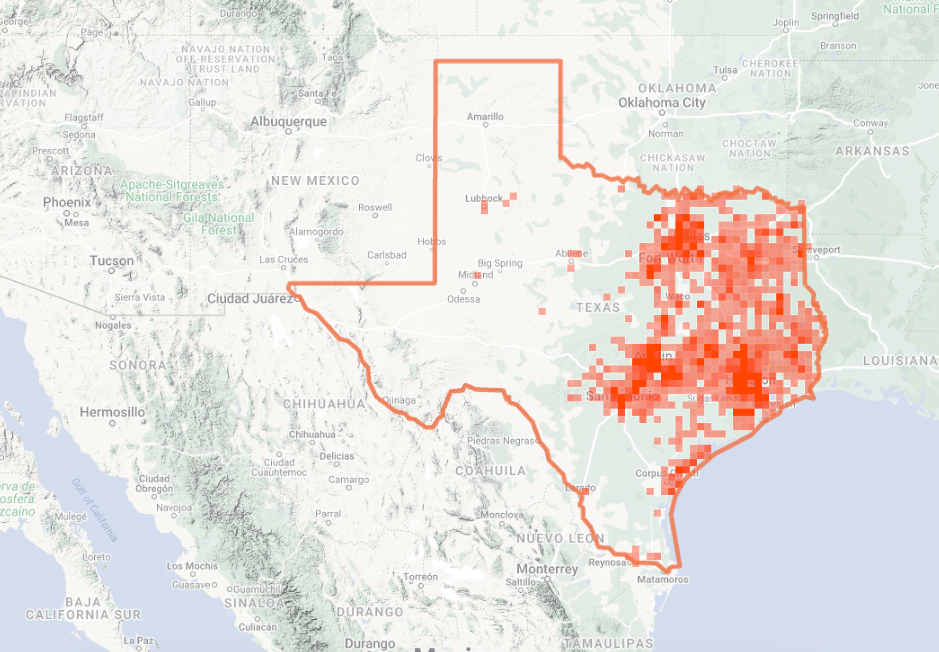
Benefits of Inland Sea Oats
For Your Landscape
- Erosion Control: Excellent for stabilizing soil on banks and slopes, and something you'd be wise to utilize the plant for as a homeowner.
- Aesthetic Appeal: Decorative seedheads provide visual interest throughout summer, fall, and even winter.
- Low Maintenance: Once established, it requires minimal care and can thrive even in pretty poor soil conditions. *This does depend on where you plant them, as with reasonable moisture, they will have the tendency to spread or droop (as mine have on my A/C line!), they can be cut in half during growing season to keep them more upright.
- Adaptable: Grows well in various light and soil conditions, making it versatile for different landscape settings. I feel people in Texas often don't know what to grow under the canopies of their Live Oak trees, Inland Sea Oats are a great option.
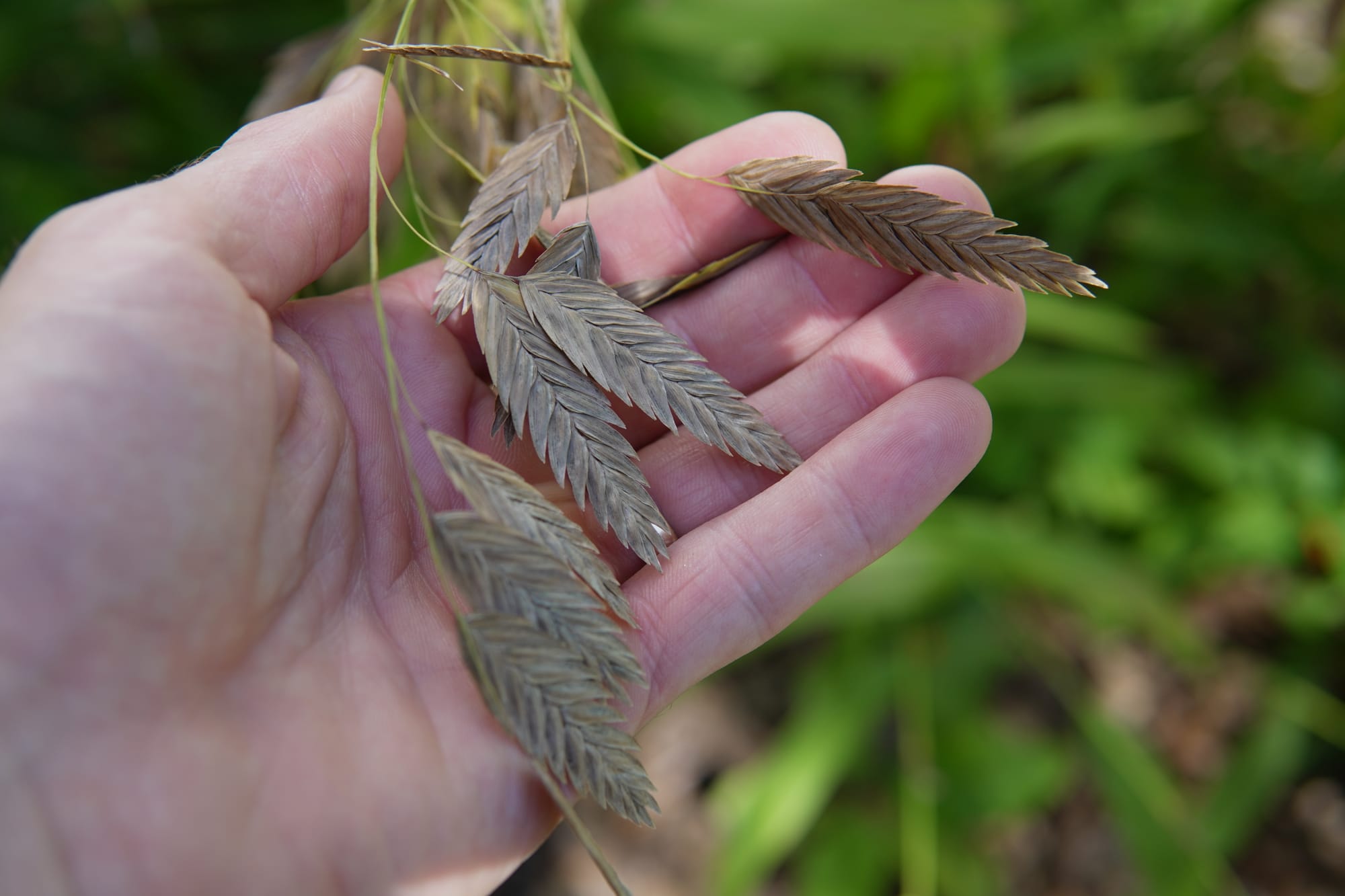
For Wildlife
- Food Source: Seeds are eaten by various small mammals and granivorous birds.
- Habitat: Provides nesting materials and cover for wildlife, birds, mammals, and insects.
- Butterfly Host Plant: Larval host plant for several butterfly species, including the Pepper & Salt Skipper and Bronzed Roadside Skipper.
- Deer Resistant: Offers landscaping solutions in areas with high deer populations. Not a problem for me, but in case that's useful for you!
Planting & Care
Location: Where is the best place to plant Inland Sea Oats?
Inland Sea Oats thrive in shaded to dappled shaded areas with moist, well-drained soils. They are particularly effective along stream banks, shaded garden edges, or gutter downspouts.
I've planted bunches off an A/C condensation line and at the base of a rainwater harvesting berm that I've seen fill up with water during heavy rain.
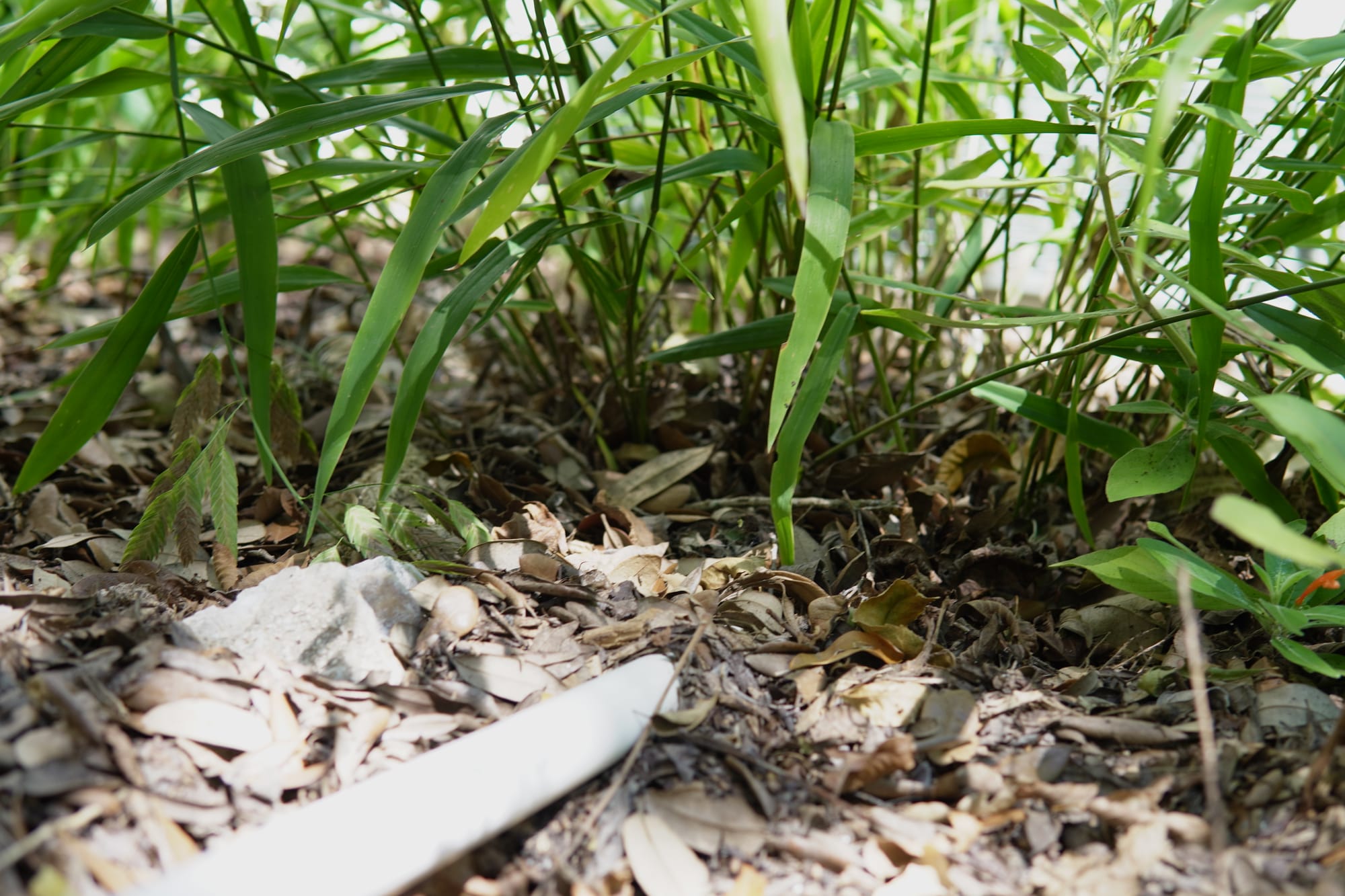
Care & Maintenance
Inland Sea Oats are reasonably straightforward to care for once established:
- Pruning: Cut back to the down to the basal rosette during late winter for a tidy appearance and to promote new growth.
- Managing Spread: These plants reseed easily and can spread aggressively. To manage their spread, remove unwanted clumps annually. The more water they receive, the more prolifically they can spread. This has pros and cons if you hope to create some cover in a set-it-and-forget-it part of your landscape.
- Watering: While moderately drought-tolerant, they benefit from regular watering during prolonged dry periods, especially in sunnier spots. So, be cautious about picking the right planting position to begin with to keep your supplemental watering to a minimum or none.
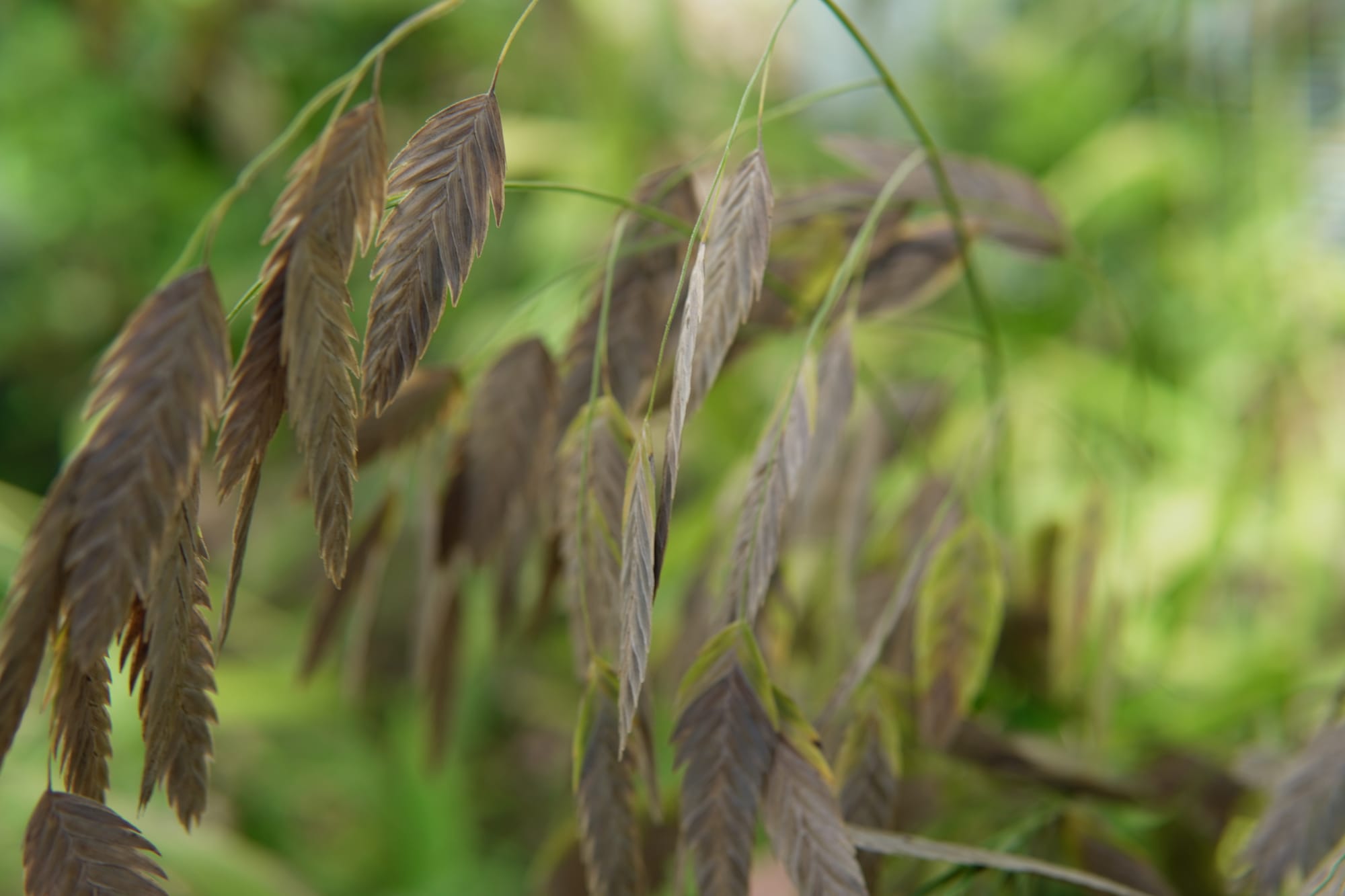
Companion Plants
Inland Sea Oats pair well with other native shade-loving plants. Good companions include:
- American Beautyberry (Callicarpa americana): Offers striking purple berries and enjoys similar moist conditions.
- Texas Mountain Laurel (Sophora secundiflora): Provides an evergreen backdrop and contrast to the oat’s seedheads.
- Turk's Cap (Malvaviscus arboreus): Thrives in the same light conditions and adds vibrant red flowers to the mix.
- Live Oak (Quercus virginiana): Ideal for providing stable shade and supporting a diverse ecosystem under its canopy.
Seasons: What to Expect
Inland Sea Oats display unique seasonal changes that add dynamic beauty to your landscape. Here’s what to expect throughout the year.
Spring: New growth begins early in the spring with fresh green leaves. This is also a great time to plant new seeds or transplant clumps as the plants start to revive from winter dormancy.
Summer: As the temperatures rise, Inland Sea Oats flourish. Their lush green foliage reaches full height, and by late summer, the decorative seedheads begin to form, turning from green to a golden hue.
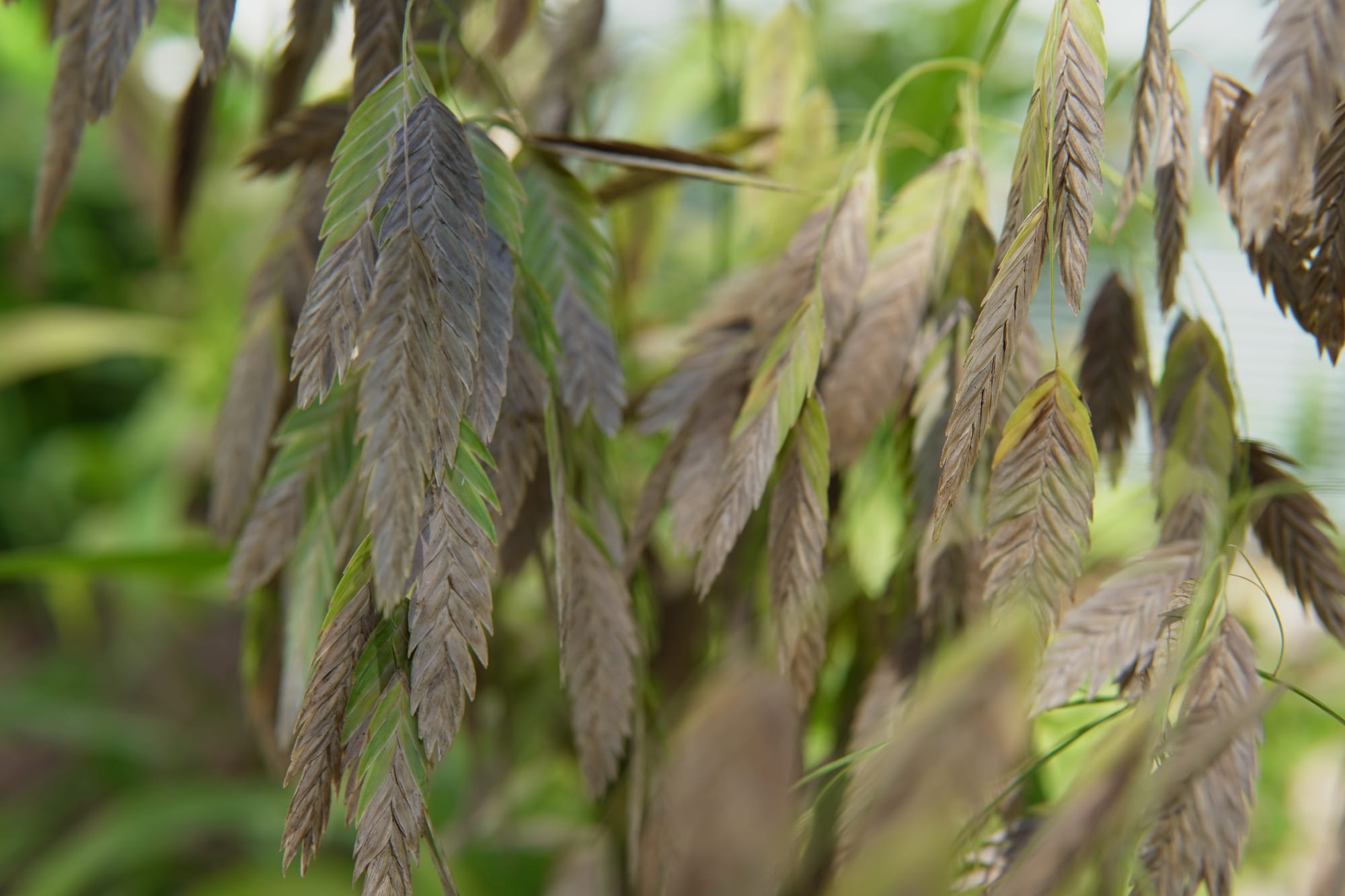
Fall: The seedheads mature into striking ivory or gold in the fall, providing visual interest and texture to the garden. This is the peak ornamental period for Inland Sea Oats.
Winter: After the first frost, the foliage dies back, and the plants turn a soft brown. To maintain a tidy appearance and encourage healthy growth in the spring, it’s best to prune them back to the basal rosette during late winter.
Propagation
Seeds: Inland Sea Oats produce seeds that can be easily harvested and sown. Collect seeds in the fall before the plants are trimmed for the winter. Sow the seeds directly in the area where you want the plants to grow. They can be planted in either fall or spring and typically germinate within the season, growing well in their first year.
You can purchase Inland Sea Oats at Native American Seed.
Transplanting: Transplanting Inland Sea Oats is straightforward due to their robust nature. If an area of your garden becomes overgrown, or if plants are growing in undesirable locations, they can be easily moved. Dig up unwanted clumps and replant them in a more suitable location, ideally in the fall or early spring. Water well after transplanting to help establish the plants in their new spot.
Sources
Along with my own experience working with Inland Sea Oats in my landscape and learning from my observations out in Texas' natural places, here are all the books and resources that I consulted in producing this page:
- How to Grow Native Plants of Texas and the Southwest by Jill Nokes
- Native Texas Plants: Landscaping Region by Region by Sally and Andy Wasowski
- Texas Wildscapes: Gardening for Wildlife by Noreen Damude & Kelly Conrad Bender
Additionally, helpful information was also derived from several websites, including:

